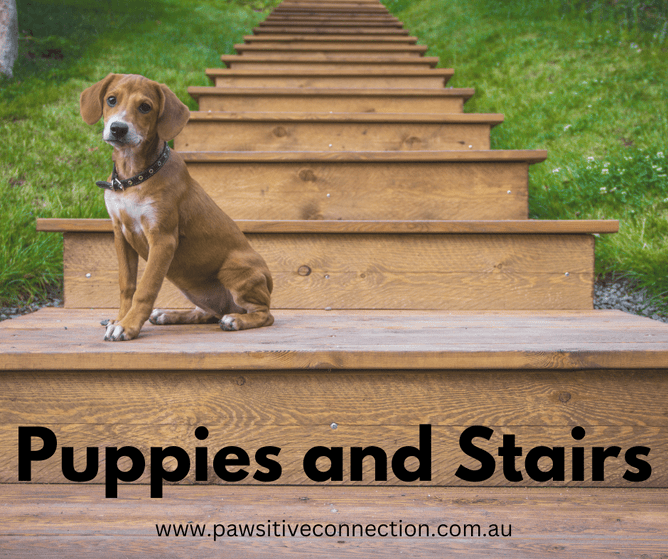Puppies and Stairs
We often get asked by puppy parents when can their puppy go freely up and down stairs.
Stairs can be a risk as dogs can slip or jump off from a height and can do damage to sensitive growth plates, muscles and ligaments.
Stairs that are open at the back can be especially difficult to navigate and cause an extra danger due to the slipping risk.
We recommend blocking or preventing free access to stairs until your puppy is fully grown. This may be up to 12-18 months in some breeds.
Use baby gates and barriers to block access and carry young puppies up and down stairs for as long as you can.
It doesn’t mean that you can’t teach your juvenile dog how to navigate stairs safely and carefully otherwise they may lack confidence by the time they do get free access.
Changing the surface can help prevent slipping accidents – put nonslip carpet or rubber on wooden, tiled or concrete stairs and blocking the backs of open stairs.
Use a lead or train your when they are calm.
Use treats to lay a treat trail and allow your dog to go up the steps in their own time. Only try a few steps each session. Going up is much easier than going down!
It is worthwhile noting that you should use caution on stairs with long backed dogs for their lifetime and ramps should be considered.
Introduce a ‘go slow’ cue. This can help in other aspects of your puppy’s life too. It just means, slow down and think about what you are doing. Puppies and young dogs often have little to no regard for their safety so it’s up to us to teach them. Teaching body awareness and proprioception early in life is essential. Practice mindful exploration on different surfaces and safe heights.
You don’t want to wrap your puppy in cotton wool, but stairs are not a jungle gym to play on so the message is to take care on stairs!

